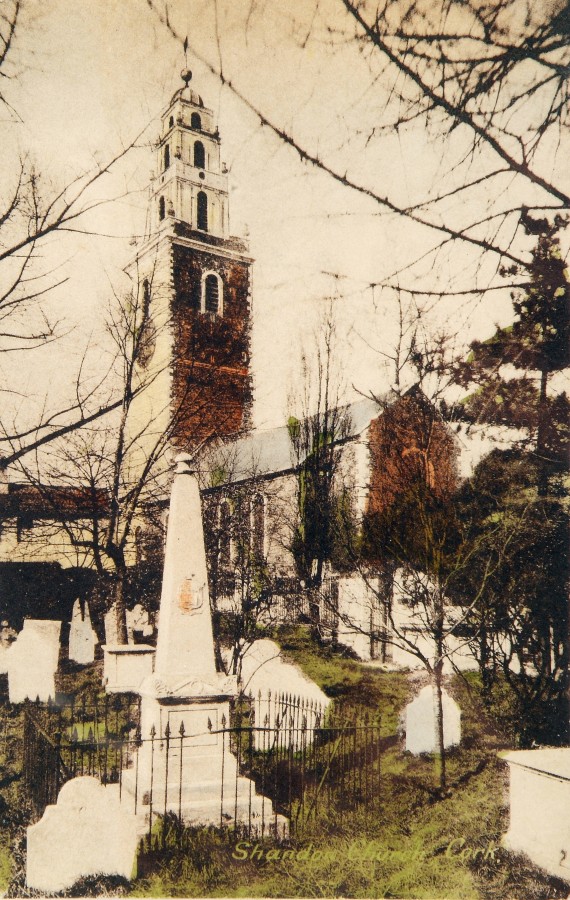Kieran’s Our City, Our Town, Cork Independent
Kieran’s Our City, Our Town Article, 30 September 2016
Remembering 1916: Back to the Future
One hundred years ago this week, Ireland underwent a kind of time travel excursion. It decided to catch up the 25 minutes with Greenwich Mean Time. When the Summer Time Act was adopted throughout Great Britain and Ireland early in the summer of 1916 its effect was significant. Watches and clocks were advanced one hour and the country enjoyed for the first time long hours of daylight in the evening. The Summer passed and the end of September meant that Great Britain had to revert to her normal time – putting back the clock one hour and thus getting back the hour’s sleep lost by the introduction of the Summer Time Act. Ireland decided, however, not to revert to the “old time”, but to try another change – that of adopting Greenwich Mean Time. London, 21 August 1916 – a new Act of Parliament has changed time in Ireland for the second time in the year.
The legislation to affect Greenwich Mean Time was brought about principally by the Irish port authorities and Chambers of Commerce and Shipping. The new rules were also regarded as being of benefit to travellers and as a way to simplify matters for Post Office workers in applying times to telegrams. However, the Act was strongly opposed by Irish farmers who argued that the change in time would “be the ruin of agriculture in Ireland” and render it impossible for parents in rural Ireland to send their children in time to school. Farmers and farm labourers would have to begin work earlier in the morning. The bill had previously been strongly opposed by the Irish Parliamentary Party, but on its introduction to the House of Commons it passed without opposition. The reason for this was due to Irish nationalists who had threatened to resist the change. They withdrew their opposition in order to save the Dublin Reconstruction Bill – the compensation money to rebuild a damaged Dublin city centre after the rising.
The Time Act received Royal Assent and the Greenwich Time Act was enacted in Ireland. Ireland’s new time was to take effect from 8am on 1 October 1916, a Sunday morning. The practical meaning of the Act was that sunlight would extend a further 25/30 minutes in Ireland on any given day. Ireland made up the 25 minutes in time she was behind England by simply putting back the public clocks, and the citizens their watches, not by 60 minutes by 35 minutes on the night, 30 September 1916. No sooner was the act passed than some persons grew anxious as to its effect on railway services and the consequent alterations it would make essential to the running of trains. Trade and commerce circles in the South were worried and the idea grew that sweeping changes in railway time tables would be made, which would be altogether against every interest of the community. The 28 September 1916 arrived and final preparations were made. The Westminster government took out advertisements in newspapers to highlight the change.
Two of the most famous public clocks in the city were changed, both made by Mangan Jewellers. The firm were established in 1817 and in 1847, craftsmen at Mangan’s built the four-faced clock on the steeple of St Anne’s Church, Shandon. This was reputed to be the largest four-faced clock in the world until the construction of Big Ben in London. The clock on St Anne’s Church was one of the first public clocks in Cork City. The idea for the clock was proposed by Councillor Delay at a meeting of Cork Corporation in 1843. He spoke of the hardship imposed on many working-class people who were unable to tell the time, as many of them did not own watches or clocks. He was supported by some of the medical profession in the city as they argued that many poor people were in danger of poisoning themselves by not knowing the times when prescribed medicines should be taken. At a meeting of Cork Corporation on 23 May 1843 it was agreed that a grant of £250 be provided for the design and construction of a clock. James Mangan, a Cork architect and clockmaker, won the public competition to design the clock. Cork Corporation were determined that the clock should stay in public ownership rather than be the property of the Church of Ireland. To this end they appointed four men, at an annual cost of £13, to maintain the clock. A local craftsman, Daniel Thresher, built the clock. In 1847, at the height of the Irish Famine, the clock was installed in the church.
Another Mangan Clock has been a landmark on St Patrick’s Street since the early 1900s. It was adjacent to Mangan’s shop. The shop itself narrowly escaped destruction in December 1920 when a British auxiliary threw a grenade into the shop, intending to ignite a can of petrol which he had placed there. The petrol did not catch fire although the grenade blew out all the windows of the shop. Mangan’s shop ceased trading in the late 1980s, before the premises were demolished, along with many others, to allow for the construction of Merchant’s Quay Shopping Centre.
Captions:
863a. Postcard of St Anne’s Church, Shandon & graveyard c.1910 (source: Cork City Museum)
863b. Postcard of St Patrick’s Street with Mangan’s Clock, c.1910 (source: Cork City Museum)

